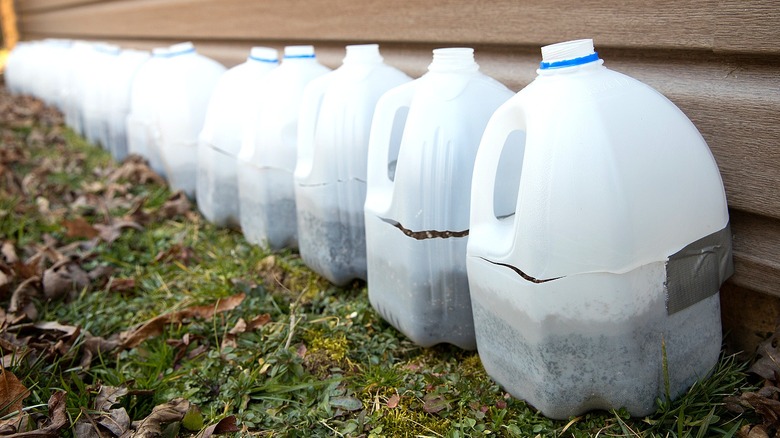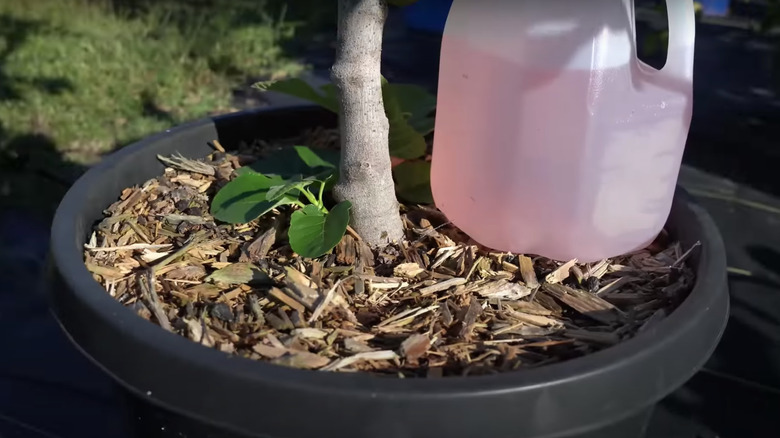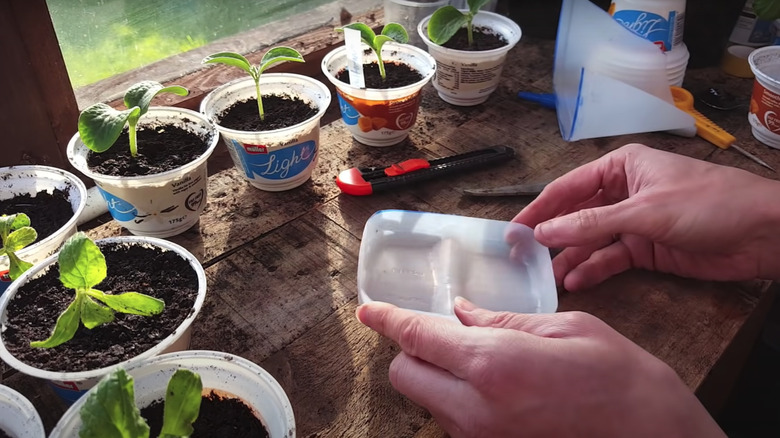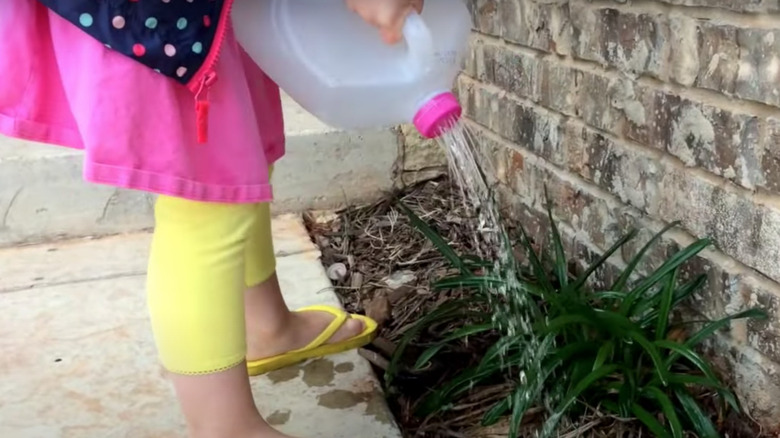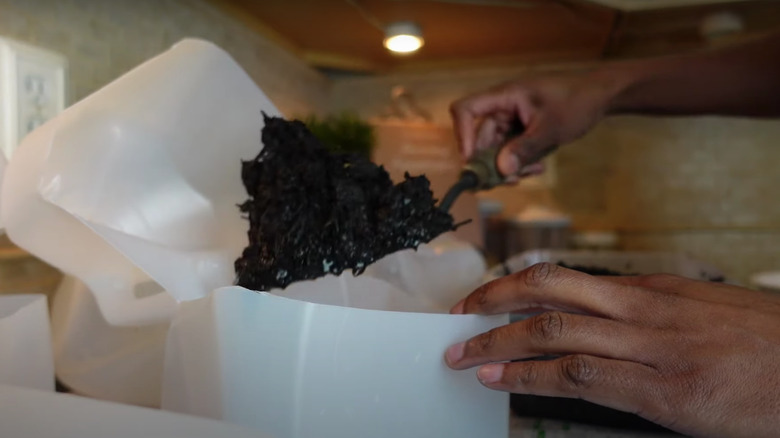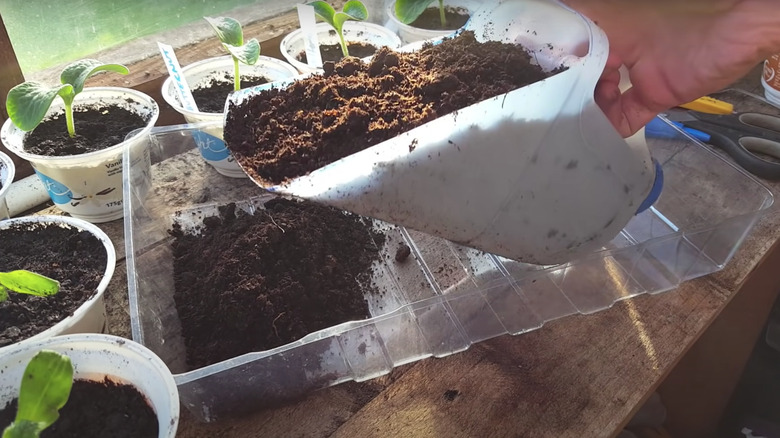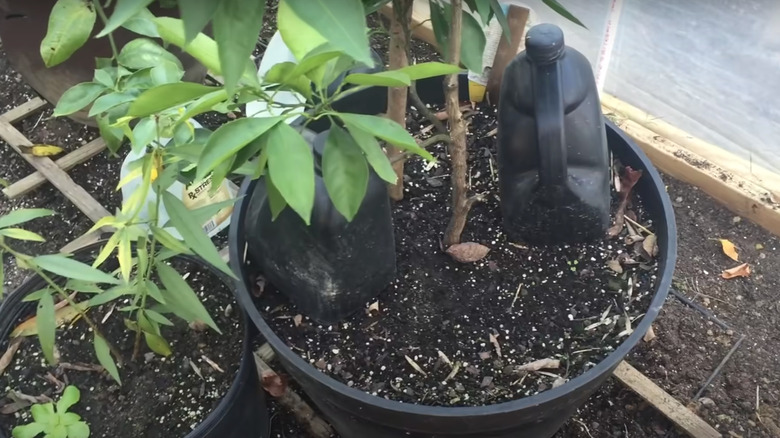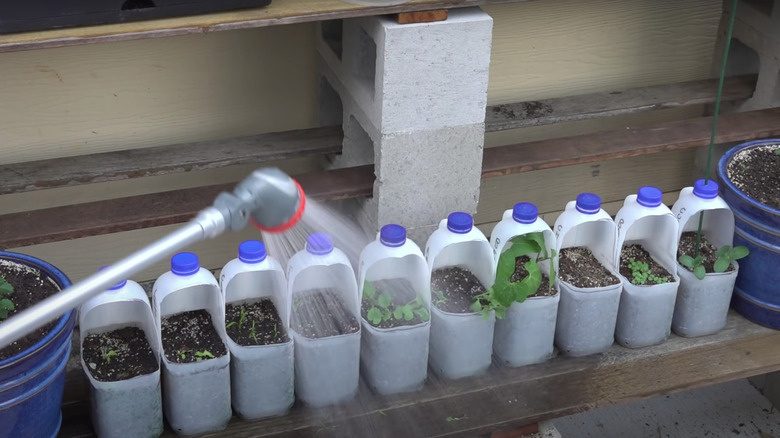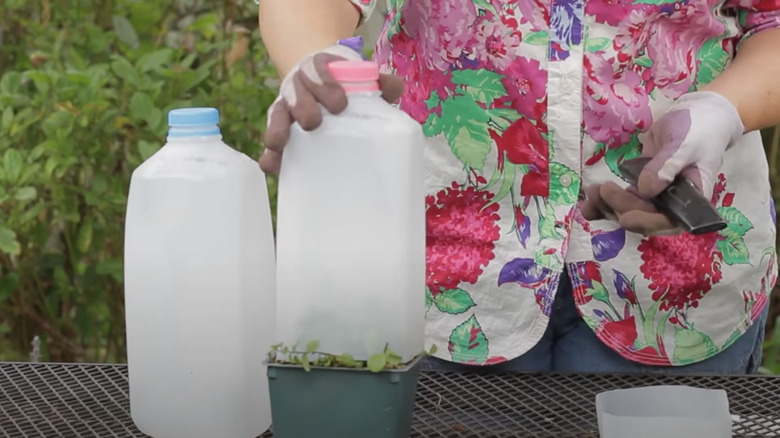How To Repurpose Your Empty Milk Jugs For Your Garden
Instead of throwing away your empty milk jugs, why not reuse them in your garden? These plastic containers are perfect for DIY projects because they're easy to cut with either a utility knife or scissors. Further, since they're not opaque, the sun's rays can permeate the material, which is important for a number of gardening hacks. The handles also make the jugs extra easy to carry around, which could simplify your gardening process.
Repurposing items like milk jugs in the garden has a couple of notable benefits. It's obviously great for the environment, as it allows you to reuse things that would have otherwise ended up in the landfill. It can also save you lots of money, as gardening tools can be expensive, but plastic jugs are free. Below, you'll find eight ways to reuse milk jugs and transform them into helpful tools for your garden. If you don't drink milk, you could also use juice cartons, laundry detergent containers, large soda bottles, or any other clear plastic jug for these hacks.
1. Drip irrigation system
Using a drip irrigation system instead of simply watering your plants is more efficient, has less of a risk of spreading diseases, deeply waters the plant, and could be helpful for keeping crops moist when you're away from home. To create your own drip irrigation system with a milk jug, simply fill it with water or liquid fertilizer, then place it next to your plant's base and puncture a small hole in the side of the plastic. To slow the drip, stuff the hole with twine or a shoelace.
2. Seed tray
Another easy way to use milk jugs for gardening is as seed trays. To do this, just cut off the bottom portion of the jug, which will create a small, flat container. You'll also need to add a few drainage holes to the bottom or sides. Then, you can add your soil and your seeds. This is great for starting seeds inside your home in the winter or the spring.
3. Watering can
There are two ways to transform a milk jug into a watering can. The first method is to remove the lid and puncture small holes in it, then fill the jug with water and place back on the lid. You can also create an air hole in the handle to help the water continuously flow. The other method is to cut off the top portion of the jug, including the top part of the handle. This will make the handle into a spout, from which you can pour the water over your plants.
4. Mini greenhouse
One of the most common and useful ways to use milk jugs for gardening is by making them into mini greenhouses for winter sowing. Start by removing the lid and puncturing drainage holes in the bottom and the sides of the container. Then, cut the jug in half horizontally but leave one small section attached to act as a hinge. Add your dirt and seeds and then tape shut the opening. Once your plants start to sprout, cover them with a blanket if it's going to freeze. When they're large enough, transport the seedlings into your garden.
5. Compost scoop
While a normal gardening shovel works just fine for shoveling compost or soil, making a milk jug into a scoop will allow you to hold a lot more organic matter at one time. To make this, cut an opening in the side of the container along a diagonal line, so that there's less plastic near the handle and more at the bottom. You can start the cut with a utility knife, then continue with scissors.
6. Greenhouse temperature regulator
If you don't have a heater in your greenhouse, it could end up getting extra cold at night during the winter or early spring, which could lead to dead seedlings. To regulate the temperature and keep your plants from freezing, paint milk jugs black, fill them with water, and place them around your plants. The jugs will absorb the heat from the sun during the day and then slowly release it into your greenhouse at night, which will help keep the temperatures above freezing.
7. Transportable garden
Those who have limited space in their backyard or on their patio/porch could create a garden out of milk jugs. To do this, cut an opening out of the side of the jugs without cutting off the base or the handle. Then, add drainage holes on the sides of each container, about an inch up from the bottom, and add your soil and seeds. These jugs can either be lined up on a ledge or hung by their handles on a branch. The plants should be watered and fertilized regularly, since they're growing in such small containers.
8. Plant covers
Finally, milk jugs can also be placed over the top of your crops as covers. This could be used to protect tender plants in the spring from cold temperatures. Another benefit is that it will also keep your plants from getting eaten by pests. To create a cover, simply cut off the base of the jug with a utility knife and place the top of the jug over the plant. If you keep the lid off, this will provide more air circulation. You could also keep the lid on to contain more heat and moisture.
